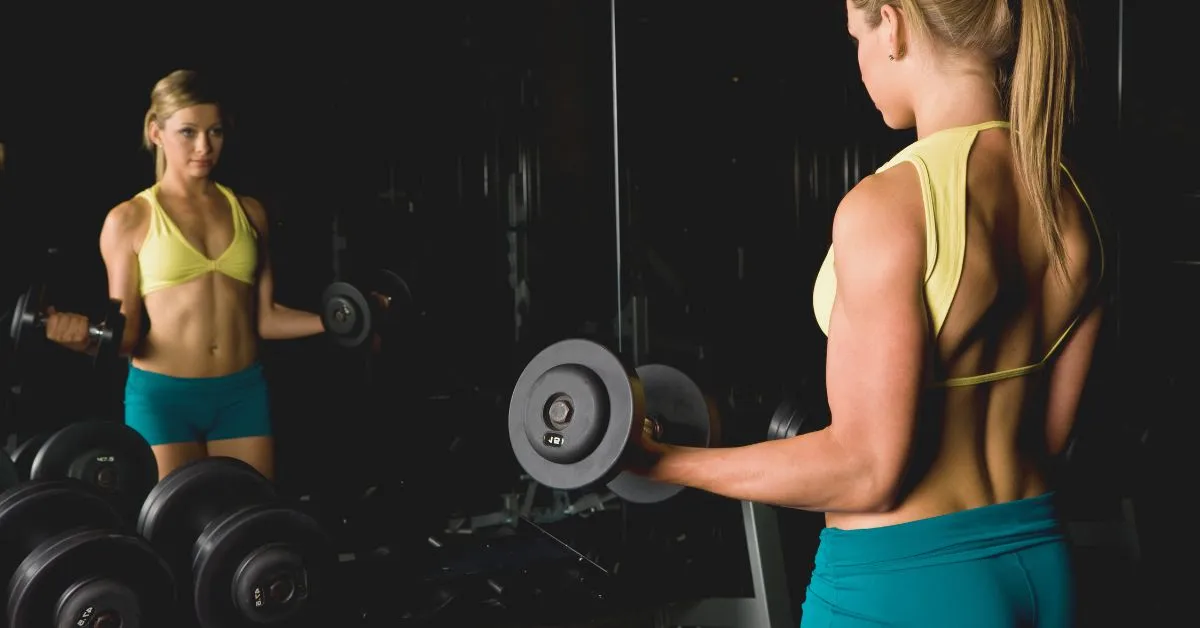When it comes to building strong, aesthetically pleasing arms, most people focus on the classic exercises: barbell curls, dumbbell curls, and triceps pushdowns. While these exercises are effective, they may not hit all the muscles in the arm that are crucial for overall development. One such exercise that often goes overlooked is the ulnar dumbbell curl. This variation of the traditional dumbbell curl targets the forearms, enhances grip strength, and provides additional muscle development for the biceps and surrounding areas.
In this article, we will dive deep into the mechanics of the ulnar dumbbell curl, how to perform it correctly, the muscles it targets, its benefits, and how to incorporate it into your training routine.
What is the Ulnar Dumbbell Curl?
The ulnar dumbbell curl is a variation of the standard dumbbell curl that focuses on engaging the forearms, particularly the brachioradialis, while also activating the biceps and brachialis. The primary difference between a regular dumbbell curl and an ulnar dumbbell curl is the wrist position.
While performing a traditional dumbbell curl, the palm faces upwards (supine grip), but in the ulnar dumbbell curl, the wrist is turned into ulnar deviation. This means the wrist moves toward the pinky side of the hand, a motion that recruits additional forearm muscles like the brachioradialis and flexor muscles more effectively.
This variation can be particularly useful for building a stronger grip, enhancing forearm definition, and improving overall arm strength, making it a valuable addition to any arm workout.
Anatomy of the Ulnar Dumbbell Curl
To understand the full impact of the ulnar dumbbell curl, it’s important to know the muscles that it targets. The arm consists of a variety of muscles, but the ulnar dumbbell curl specifically works the following:
Biceps Brachii
The biceps are the most well-known muscle in the arm. The ulnar dumbbell curl targets the long head and short head of the biceps to some degree, but the movement focuses more on the brachialis and brachioradialis.
Brachialis
The brachialis is a muscle that lies underneath the biceps, and it plays a major role in elbow flexion. When you perform an ulnar dumbbell curl, the brachialis is heavily engaged as the wrist is turned into ulnar deviation. This makes the exercise excellent for building arm size and definition.
Brachioradialis
The brachioradialis is a muscle of the forearm that helps with elbow flexion. The ulnar dumbbell curl places greater stress on this muscle compared to traditional curls because of the wrist positioning. This is why the exercise is particularly effective for building forearm strength and overall arm balance.
Forearm Flexors
The forearm flexors also get activated during this exercise, as ulnar deviation involves rotating the wrist toward the pinky side. This helps improve grip strength and forearm size, which are crucial for improving performance in exercises like deadlifts, pull-ups, and even daily activities that require hand strength.
How to Perform the Ulnar Dumbbell Curl
Performing the ulnar dumbbell curl correctly is key to ensuring maximum muscle activation and avoiding injury. Below is a step-by-step guide on how to perform this exercise:
Step 1: Starting Position
- Stand with your feet shoulder-width apart and hold a dumbbell in each hand.
- Keep your arms fully extended, with the dumbbells at your sides.
- Make sure your palms are facing inward, towards your body (neutral grip), as opposed to facing forward (supine grip) like in a regular bicep curl.
Step 2: Wrist Position
- The key to the ulnar dumbbell curl is the wrist position.
- Slightly rotate your wrists so that your palms are facing inwards but with your wrists turned toward the pinky side (ulnar deviation). This means your wrists will angle downward as you curl the dumbbells.
Step 3: The Curl
- Curl the dumbbells up towards your shoulders, ensuring your upper arms remain stationary and your elbows don’t move forward.
- As you curl, focus on squeezing your forearms and contracting the muscles, especially the brachioradialis and brachialis.
- Do not allow your wrists to move out of position—keep them in the ulnar deviation to fully engage the target muscles.
Step 4: Full Contraction
- At the top of the movement, when your forearms are as close as possible to your shoulders, squeeze the muscles hard to create peak contraction.
- Make sure to pause for a second at the top of the curl to really activate the forearms and biceps.
Step 5: Return to Starting Position
- Slowly lower the dumbbells back to the starting position, maintaining control throughout the descent.
- Avoid using momentum to drop the weight; the slower the negative, the more effective the exercise.
Step 6: Breathing
- Exhale while curling the dumbbells up.
- Inhale as you lower the dumbbells back down.
Form and Technique Tips
Maintaining proper form during the ulnar dumbbell curl is crucial to prevent injury and maximize the effectiveness of the exercise. Here are some key tips:
Avoid Swinging
One of the most common mistakes people make with dumbbell curls is swinging the weights to generate momentum. While this may help you lift heavier weights, it significantly reduces the engagement of the target muscles. Always focus on strict, controlled movements.
Elbow Position
Keep your elbows tucked in close to your body or slightly in front of it. Allowing your elbows to flare out can lead to improper muscle activation and potential shoulder strain. Keeping the elbows fixed ensures that your forearms do all the work.
Tempo
To maximize muscle growth, slow down the movement. Aim for a 4-second positive (lifting) phase and a 2-second negative (lowering) phase. This increases the time under tension and helps stimulate muscle fibers for better hypertrophy.
Common Mistakes to Avoid
Even though the ulnar dumbbell curl is relatively simple, there are a few common mistakes that can hinder its effectiveness or lead to injury:
Using Too Much Weight
It’s tempting to pick up heavy dumbbells, but this can lead to poor form and compromise the integrity of the exercise. Start with a moderate weight and focus on perfecting your form before increasing the load.
Overextending the Wrist
While you want to ensure that your wrist is in ulnar deviation, please don’t overdo it. Excessive wrist rotation can lead to wrist strain or injury. Make sure the rotation is controlled and does not cause discomfort.
Not Engaging the Target Muscles
It’s easy to let momentum take over when performing the curl. Focus on consciously squeezing the muscles in your forearms and biceps at the top of the movement to get the most out of the exercise.
Benefits of the Ulnar Dumbbell Curl
Now that you know how to perform the ulnar dumbbell curl, let’s discuss the specific benefits it provides to your training routine:
Forearm Strength and Development
The ulnar dumbbell curl emphasizes the forearm muscles, especially the brachioradialis and flexor muscles. Strengthening these muscles not only improves the aesthetics of your arms but also enhances grip strength, which can improve performance in exercises like deadlifts, pull-ups, and rows.
Enhanced Grip Strength
Grip strength is essential for many compound lifts and functional tasks. The ulnar dumbbell curl targets the forearm muscles that control your grip, making it a great exercise for improving hand strength and overall arm power.
Improved Arm Aesthetics
Incorporating the ulnar dumbbell curl into your routine can help build well-rounded arms. While traditional curls primarily target the biceps, the ulnar dumbbell curl adds focus to the brachialis and brachioradialis, giving your arms a fuller, more defined appearance.
Injury Prevention
By strengthening the muscles around the elbow and wrist joint, the ulnar dumbbell curl helps improve joint stability and can reduce the risk of injuries that often occur in these areas. This is particularly beneficial for individuals who lift heavy weights or engage in sports requiring arm strength.
Incorporating the Ulnar Dumbbell Curl into Your Routine
The ulnar dumbbell curl can be added to any arm day or forearm workout. Here’s how you can include it based on your experience level:
Beginner
For beginners, focus on perfecting your form with lighter weights. Start with 3 sets of 10-12 reps. As you build strength, gradually increase the load.
Intermediate
For more experienced lifters, incorporate 4 sets of 8-10 reps. You can increase the weight slightly and use a controlled tempo to maximize muscle activation.
Advanced
Advanced lifters can go heavier, doing 4-5 sets of 6-8 reps, emphasizing a slow, controlled tempo (e.g., a 4-second positive, 2-second negative). You may also include pauses at the top of each rep to increase the time under tension.
Conclusion
The ulnar dumbbell curl is an effective and underutilized exercise that targets key forearm muscles, helping you build strength, size, and definition in your arms. By focusing on proper form, engaging the right muscles, and incorporating it into your routine, you can unlock the full potential of your arm development. Whether you’re looking to enhance your grip strength, improve arm aesthetics, or prevent injury, the ulnar dumbbell curl is a powerful addition to your arm workout arsenal.
FAQs:
What is the ulnar dumbbell curl?
The ulnar dumbbell curl is a variation of the bicep curl, where you rotate your wrists towards the pinky side, targeting the forearm muscles, including the brachioradialis.
How do I perform an ulnar dumbbell curl correctly?
Stand with dumbbells in hand, palms facing inward. Rotate your wrists toward the pinky side (ulnar deviation) and curl the weights up slowly, focusing on your forearms and biceps.
What muscles does the ulnar dumbbell curl target?
It primarily targets the brachioradialis, brachialis, and forearm flexors while also engaging the biceps for overall arm development.
Can the ulnar dumbbell curl improve grip strength?
Yes! The ulnar dumbbell curl is excellent for enhancing grip strength by activating the forearm muscles responsible for hand strength.
How many sets and reps should I do for the ulnar dumbbell curl?
For beginners, start with 3 sets of 10-12 reps. Intermediate lifters can perform 4 sets of 8-10 reps, and advanced lifters can aim for 4-5 sets of 6-8 reps with heavier weights.











